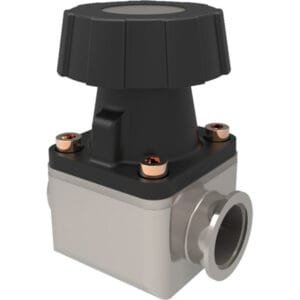Swagelok Port Connectors: Reliable Tube-to-Port Connections for High-Integrity Systems
Swagelok Port Connectors from TFM are designed to connect tubing directly to instrumentation ports, valve blocks, or manifold interfaces in gas and fluid systems. Engineered with Swagelok’s industry-leading dual-ferrule compression technology, these fittings offer leak-proof, torque-free seals, ideal for maintaining pressure integrity in compact or sensitive environments.
Whether used in vacuum lines, pressure instruments, or process control panels, Swagelok Port Connectors ensure smooth, secure integration between tubing and female threaded or welded ports.
Key Features of Swagelok Port Connectors:
Leak-Proof, Torque-Free Seals
The Swagelok compression end delivers consistent sealing without overtightening, ensuring optimal tube grip and longevity—even in high-vibration systems.Direct Tube-to-Port Connectivity
Designed to mate Swagelok tube ends directly to tapped ports or component inlets, minimizing the need for additional adapters or fittings.Hazard and Cost Reduction
Swagelok Port Connectors are built to eliminate leaks at transition points, reducing risk in high-pressure and hazardous media applications while lowering maintenance costs.Material Options for Application-Specific Use
Stainless Steel Port Connectors: Ideal for gas systems, including UHV environments, cleanrooms, and chemically reactive setups.
Brass Port Connectors: Suitable for water systems and non-corrosive fluid applications where cost and corrosion resistance must be balanced.
Supports Standard Tubing Sizes
Available for both fractional and metric tubing, with port-end configurations tailored to match popular industry manifolds, gauges, or panel systems.
Applications:
Connecting tubing to pressure transducers or regulators
Instrument panels and analytical gas delivery systems
Vacuum manifold access points and gas inlets
Coolant or utility water distribution panels
OEM instruments or control enclosures with integrated port threads
TFM also supplies a full suite of Swagelok-compatible fittings, including bulkhead unions, elbows, male/female NPT adapters, and valves, giving engineers and system designers the flexibility to construct high-performance, leak-free fluid and gas pathways.





Reviews
There are no reviews yet.